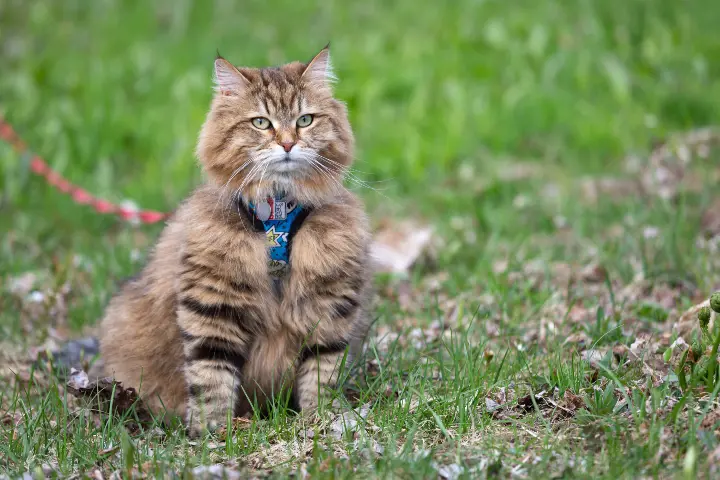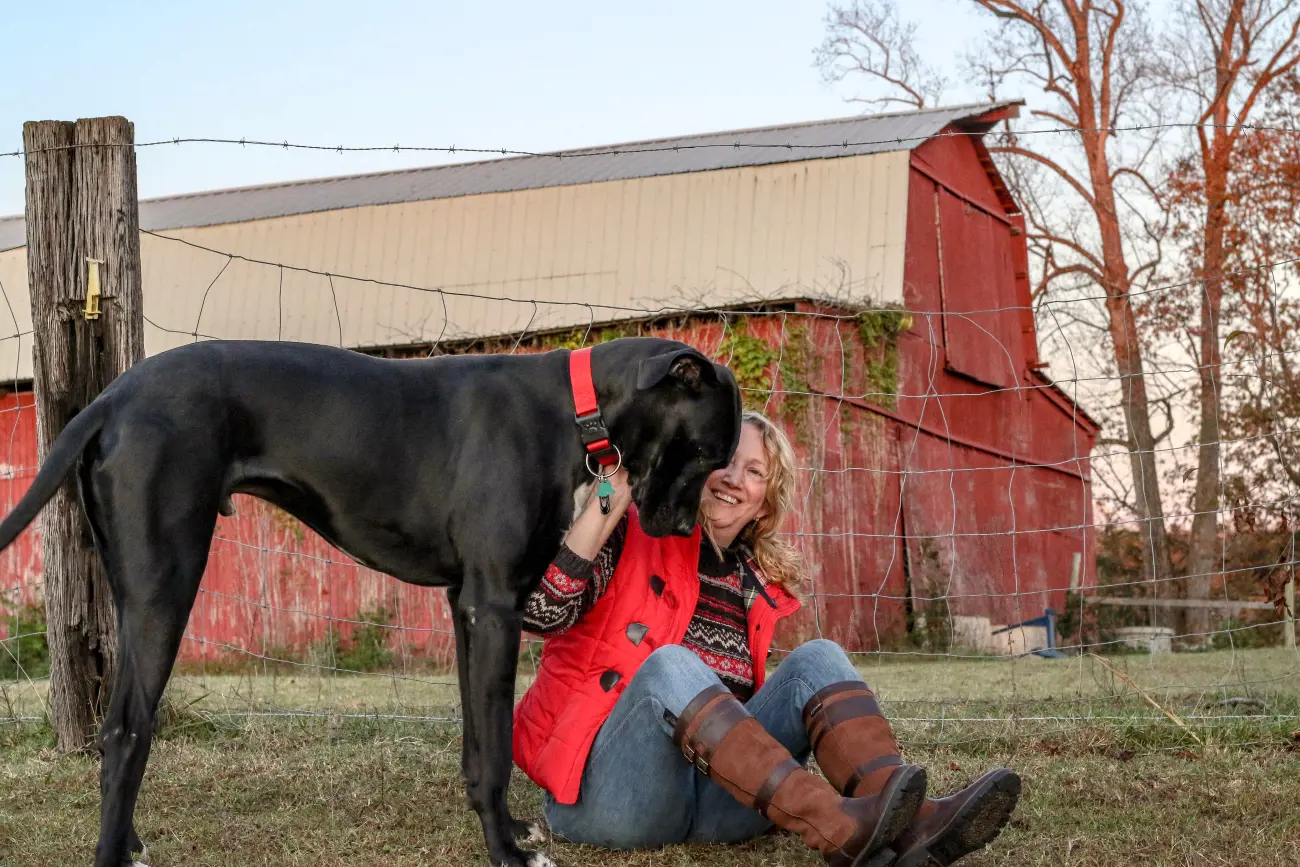Master the art of cat harnessing: A step-by-step guide on how to put a harness on your feline friend
31st July, 2023

Introduction to cat harnessing
You might think that walking a cat on a leash is reserved for eccentric cat parents, but the truth is that there are many benefits to harnessing your feline friend. Cats are curious creatures, and exploring the outdoors can be mentally stimulating and physically beneficial for them. However, it's important to keep them safe and give them extra security while they explore. That's where cat harnessing comes in.
Harnessing allows you to safely guide your cat, giving your cat freedom to explore their surroundings while keeping them protected from potential dangers. It's an excellent alternative to letting your cat roam free, especially if you live in an urban area with busy roads and various hazards.
In this article, we'll dive into the benefits of using a cat harness, the different types of harnesses available, how to choose the right one for your cat, and how to put a harness on your cat step by step.
What is a cat harness used for?
Have you ever wondered, "What is a cat harness used for?" Well, you're not alone!
A cat harness is a fantastic tool for adventurous feline owners who want to safely explore the great outdoors with their furry companions. It provides a secure and comfortable way to attach a leash to your cat, allowing them to roam and investigate their surroundings without the risk of running off or getting lost.
Additionally, a cat harness can be used during car trips, vet visits, or even just a casual stroll around the neighbourhood.
So why not give it a try? With a cat harness, you're giving your kitty the freedom to enjoy new experiences while staying safe and protected.
Benefits of using a cat harness
First, let's talk about why you might want to use a cat harness in the first place. There are several benefits to harnessing your cat, including:
Safety
Cats can be unpredictable, and even the most well-behaved feline can bolt if something scares them. A cat's harness gives you more control over your cat's movements, ensuring they don't run into danger like traffic or other animals.
Exercise
While cats are known for their agility and flexibility, indoor cats can become sedentary and overweight without proper exercise. Walking your cat while wearing a harness provides them with an opportunity to stretch their legs, burn off energy, and maintain a healthy weight.
Mental stimulation and socialisation
Exploring the outdoors exposes your cat to new sights, sounds, and smells, which can be mentally stimulating and help prevent boredom.
It also allows them to interact with other animals and people, promoting healthy socialisation.
Types of cat harnesses
When choosing a cat harness, it's important to understand the different types available. The three main types of cat harnesses are:
- H-Style harness: A H harness consists of two rectangles loops connected by a back strap. The neck and chest straps are adjustable, providing a comfortable fit for your cat. This type of harness is suitable for cats of all sizes and shapes.
- Figure-eight harness: The figure-eight harness is made up of two loops, one for the cat's neck and one for the cat's chest, which intersect at the back. This type of cat harness can be adjusted to fit your cat snugly but may not provide as much control as a H harness.
- Vest harness: A vest harness is designed to wrap around your cat's body like a vest, providing more cover and control than other cat harness types. It's usually made of padded material for added comfort and has an adjustable strap for a snug fit.
Vest harnesses are especially suitable for small or skittish cats, as they provide a sense of security.
How to choose the right harness for your cat
Now that you know the different types of cat harnesses available, it's time to choose the right one for your furry friend. Here are some factors to consider:
Comfort and fit
The most important factor when choosing a cat harness is comfort and fit. A well-fitting harness should be snug but not too tight, allowing your cat to move comfortably without feeling restricted. Look for adjustable straps to ensure a proper fit and padded material for added comfort.
Durability and material
Choose a cat harness made from durable materials that will withstand your cat's exploration and potential escape attempts. Nylon and mesh are popular choices, as they're both lightweight and strong.
Style
While style may not be a top priority, it's worth considering when choosing a cat harness. Some cats may be more comfortable in a vest-style harness, while others may prefer the simplicity of a H-style or figure eight harness.
Consider your cat's personality and preferences when making your decision.
Preparing your cat for harness training
Before you can start to harness train your cat, it's important to prepare them for the experience. Here are some steps to follow:
Introduce the harness
Start by showing your cat the harness and letting them sniff and explore it. This will help them become familiar with the new object and reduce any fear or anxiety they may have.
Use positive reinforcement
Reward your cat with treats and praise when they show interest in the harness. This will help them associate the harness with positive experiences and make them more likely to accept it.
Practice wearing the harness indoors
Before venturing into the outside world, have your cat wear the harness indoors to get used to the feeling. Start with short sessions and gradually increase the length of time the cat wears the harness, always using positive reinforcement.
How to put a harness on a cat step by step
Now that your cat is familiar with the harness, it's time to learn how to put it on them properly. Follow these steps:
- Lay the harness flat on the ground or a table with the straps unbuckled.
- Gently place your cat on top of the harness, positioning their front legs through the appropriate openings (for H-style and figure-8 harnesses) or wrapping the vest around their body (for vest harnesses).
- Buckle and adjust the straps, ensuring the harness is snug but not too tight. You should be able to fit one or two fingers between the harness and your cat's body.
- Attach the leash to the D-ring on the back of the harness, and you're ready to go!
How do you put a harness on a cat that hates it?
How to put a harness on a cat that hates it? Well, it's not an impossible task, but it does require patience, persistence, and a bit of feline psychology.
Give your kitty ample time to get used to the harness before attempting to put it on.
Leave the harness near their favourite resting spots or play areas so they can sniff and explore it on their own terms.
Try using treats or their favourite toy to create positive associations with the harness. Slowly work your way up to placing the harness on your cat and rewarding them with treats and praise for their cooperation.
Remember, patience is key – don't force the process, and soon your kitty will be safely harnessed and ready for adventure!
Tips for successful cat harnessing
Here are some tips to make your cat harnessing experience a success:
- Always use positive reinforcement, including treats and praise, to encourage your cat to accept the harness.
- Be patient and go at your cat's pace. Some cats may take longer to adjust to wearing the harness, and that's okay.
- Practice indoors before venturing outside to ensure your cat is comfortable and confident in their harness.
- Monitor your cat's body language and behaviour while wearing the harness. If they seem uncomfortable or distressed, remove the harness and try again another time.
Common cat harnessing mistakes and how to avoid them
Avoid these common cat harnessing mistakes for a smoother experience:
- Choosing the wrong harness type or size: Make sure to select a harness that is the correct size and preferences for your cat.
- Putting the harness on too tight or too loose: A well-fitting harness should be snug but not restrictive. You should be able to place two to three fingers comfortably in the strap. Adjust the straps as needed to ensure a comfortable fit.
- Skipping the indoor practice sessions: By practising indoors first, you can help your cat become more comfortable and confident in their harness before going outside.
How to train your cat to walk on a leash with a harness

Once your cat is comfortable wearing their harness, it's time to start leash training. Here are some steps to follow:
- Start indoors: Begin training your cat indoors, in a quiet and familiar environment. Use treats and praise to encourage them to follow you while on the leash.
- Move to outdoor spaces: Once your cat is comfortable walking on the leash indoors, gradually move to outdoor spaces. Start with quiet areas and slowly increase the level of distraction.
- Let your cat lead: Allow your cat to lead the way, exploring their surroundings at their own pace. You can gently guide them with the leash, but avoid pulling or tugging.
- Use positive reinforcement: Continue to use treats and praise to encourage your cat to walk on the leash. Remember to be patient and go at your cat's pace.
Why won't my cat wear a harness?
Cats are known for their free-spirited and independent nature, making it difficult for them to adjust to the idea of wearing a harness.
Unlike dogs, who are often trained from a young age to walk on a leash, cats are not used to this constraint. They may feel uncomfortable, scared, or even threatened when faced with the prospect of wearing a harness.
Moreover, cats have a unique body structure that makes it challenging for them to adapt to the harness. Their flexible spine and shoulder blades allow them to squeeze through tight spaces and climb trees with ease. Cat harnesses may restrict their natural movements, causing them to feel trapped and anxious.
So, if you're trying to introduce your feline friend to a harness, patience and gradual exposure is key. With time, your cat may learn to accept and even enjoy the newfound freedom that comes with wearing a harness.
Conclusion
Cat harnessing can be a fun and rewarding experience for both you and your furry friend. By choosing the right harness, preparing your cat for harness training, and following the steps for putting on a harness and leash training, you can safely and confidently explore the outdoors together.
Remember to always use positive reinforcement and monitor your cat's behaviour and body language for signs of discomfort or distress. With a little patience and practice, you can master the art of cat harnessing!
To get a cat insurance quote for your furry friend, visit our website by clicking here. If you have any questions or would like to speak to a member of our cat insurance team, give us a call at 0330 102 5748.
Helpful Pages
Recent Posts

Why do Great Danes bury their heads?
12/03/25
Find out more about Beagles
28/02/25Pet Insurance Quote
- 98% claims paid *
- Claims paid directly to vets
- 24/7 vet video consultations
- Interest free monthly payments


